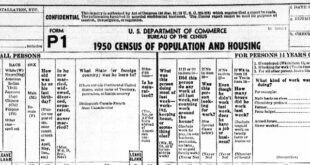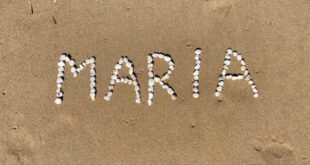Last month was spent planning an all-day cemetery trip to visit those relatives who were not as close to you during your lifetime, if at all. We decided who to look for, found the grave locations from the cemetery kiosk or by calling the cemetery directly.
If that printout from the kiosk did not have a section map, then you will need to stop at the cemetery office to get some help. I do not suggest just wandering around the section until you find the grave, unless you enjoy doing that. There are some clues in the sections themselves. If you walk through a section, there may be small round concrete markers that have numbers on them. Sometimes they have the letters BK and numbers on either side, such as “14 BK 15.” This means that block 14 is on this side, and block 15 is on that side. Then there may be more numbers perpendicular to the BK numbers. “67 68” So lot 67 is this way and lot 68 is that way.
Also, look closely at some upright monuments that have a long base, and then a block on top.
Sometimes, on the base, you might see some numbers “42-3”. This means that this monument belongs to lot 42 block 3. Not all monuments have these numbers, but in lieu of the round concrete markers, these can help too. Keep in mind that there are not many such markers in older sections. If there are a lot of upright monuments, especially with photos on them, and the death dates are from the 1920s and 1930s or before, chances are the section is pretty old and they may not have placed enough of these markers. Newer cemeteries such as Maryhill, St. Michael, and Good Shepherd have plenty of ground markers.
If the person is entombed in a mausoleum, they are easy to find. The crypt numbers are usually found at the end of each wall, sometimes at foot level. It will say “1042” and the other wall will say “1058” so you know the crypts between 1042 and 1058 are in that area.
Here’s something else to keep in mind. For some reason, they like to put even numbered crypts in one area and odd numbered ones in another, across the building. So when you’re looking for crypt 1055 and you find the hallway containing 1042 through 1058, that doesn’t necessarily mean you will find 1055 there. It might be at the opposite end of the building. Also, pay close attention to the Saint name, or if there is a building or court number. Just because you find crypt 28 doesn’t mean it’s the right crypt 28. The kiosk might tell you “St. Peter Claver” so you need to find that Saint’s area first, and it will be crypt 28 there. Each Saint may have a crypt 28. If the mausoleum says Court 8, or Building W6, you need to find that first. I guess the overall point is that each cemetery has its own numbering system, and you have to either ask for help, or get familiar with that cemetery and that mausoleum.
So how is your plan coming along? You have a list of a dozen relatives and you have looked them up in the kiosk. Two of them, Uncle Spiros and Aunt Rita, for some reason are not in the kiosks. So they may be buried either out of the area, or they are buried in a non-Catholic cemetery. After finding the funeral card, it turns out that they’re buried at Elmwood Cemetery in River Grove, which has a lot of Greek and other non-Catholic ethnic families. The others are buried at Mount Carmel (surprise!), Queen of Heaven, both in Hillside, and the rest at St. Joseph in River Grove. Hey look! That’s right across the street from Elmwood! Perfect!
If you need to find graves of relatives in SOME non-Catholic cemeteries, please don’t be surprised if they are not always helpful. The oldest cemeteries in Chicagoland, which are all non-Catholic, are frequently unwilling to give grave locations unless you “donate” money to defray the cost of looking them up. I’m not picking on anybody but I am just letting you know my personal experience.
When planning when to go, keep the weather in mind. It might not be raining this weekend, but the major snow from this winter has to melt, which leaves a lot of standing water, which leads to many mosquitoes and a lot of muddy grass. In the Fall, you end up with a lot of leaves on the ground, which makes it difficult to see all the flat markers. Late Spring is the best time to go. Not too hot, hopefully not too wet.
So you’re ready to go. Take a cooler with water bottles and ice to keep hydrated. Don’t forget your maps and locations. Remember also that cemetery offices are open on Saturdays only until 1pm, and are closed on Sundays and Holy Days of Obligation. So check that Church calendar. You don’t want to rely on asking the office for help only to find out that today is Assumption of the Blessed Virgin Mary and the doors are locked. Anyway, the Catholic cemetery gates are open 8:30am-5:00pm (open until 7pm during the summer months). The mausoleums are usually only open until 4pm year round. You can visit on a Sunday but the office will never be open, so it’s at your own risk.
Here is yet ANOTHER possibility for you to be aware of: Your relative may not have a marker! You may wander around aimlessly and look but for one reason or another, they chose to not put a stone on the grave. Make sure to follow the round markers to be sure you found the right location. If there is no stone with the names you are looking for, then you either are in the wrong place or your relatives’ heirs chose to not mark the grave.
After all this effort and all these possibilities, what are you going to find? Potentially a lot.
Let’s start with the mausoleum. The vast majority of crypts will only show the name, and the years of birth and death. They almost never show the exact dates of birth and death. There are also no pictures on crypts. The crypts are all uniform within a given area. There’s not much artistic expression here. There’s a lot of art and statuary within the mausoleum, but the entombed don’t get to leave an epitaph or a Bears logo or any other form of self-expression. Once in a great while, the family will put a funeral card on the front of the crypt, or a photo. The unexpected genealogical surprise might be finding another family member in the crypt next to your relative. You may even find a spouse you didn’t know about. More about him later.
The regular graves may give the bereaved a chance to express themselves a little more. Many grave stones list the full date of birth and death. But many may just have the years. An upright monument, though larger, has less room for full dates because there might be eight people on the lot. There might be a saying or other inscription in addition to the name and dates. Older monuments, especially where there are plenty of Italians, have photographs of the deceased. In many cases, these have been lost or destroyed. But you may find out that great-grandma had a little brother who died at 14 in the flu epidemic, and you find his monument and there’s a photo. It’s the genealogical equivalent of the “high-five” but we must remember where we are and act with a little decorum.
Besides finding dates and photos, we can also run into other relatives we didn’t know about. ZiZi Mariann’ is entombed in the mausoleum next to Fred Jorgenson in the same crypt. Who the heck is Fred Jorgenson? It looks like he died a few years before her. If he is in a separate crypt next to her, then he is just her eternal neighbor. But if they are in the same crypt, there’s a story to be found. Her name on her crypt is “Marianna Crudele” and does not mention Jorgenson. So now I call a relative who ought to know, and ask if ZiZi married again. “Oh yeah! Her husband died in Italy in his 30s. She came to America with her kids. Later on she met this Fred Jacobson…..Jurgensen….something.” Maybe they never married. Maybe they did. Maybe that’s why I couldn’t find her death notice! Look again in the old newspaper. “Marianna Jorgenson, beloved wife of the late Fred Jorgenson and the late Vito Crudele…”
Check with the cemetery to find out the rules for placing flowers or decorations. They all have different rules. Check also on www.findagrave.com to see if there are any famous people buried in the same cemetery as your family member(s). I was in Minneapolis once looking for one distant cousin and accidentally found both Senator Hubert Humphrey AND Tiny Tim! Go figure!
Of course bring your camera or cell phone camera with you to take pictures of the stones and crypts you visit. You might find some interesting markers or statuary, especially in older cemeteries like Mount Carmel. Please be careful of tall monuments that are leaning – do NOT go near them. They might topple over and cause serious injury or worse.
I hope all these varied tips help you spend a nice relaxing day looking for ZiZi and finding something unexpected!
If you have any questions, send me an e-mail at italianroots@comcast.net and please put “Fra Noi” in the subject line. Have fun!
 Fra Noi Embrace Your Inner Italian
Fra Noi Embrace Your Inner Italian







